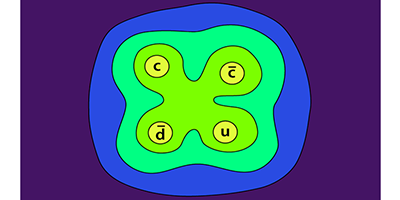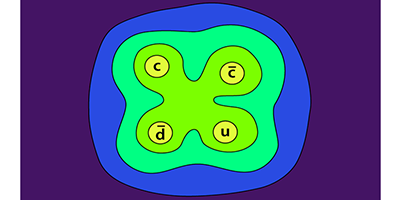Catching ’s in Particle Colliders
In April 2013, particle physicists made an unexpected discovery: a particle, called , that appears to be composed of four quarks rather than the usual two or three. The BESIII Collaboration—one of the two groups to first spot —has now explored a separate set of reactions that may lead to the production of these four-quark states. As reported in Physical Review Letters, they do find strong signatures of a particle, but its mass isn’t exactly that of . Regardless of its true identity, the detected entity may give a better understanding of how four quarks might bind together in these unusual particles.
The original evidence for the particle comes from electron-positron collisions. At an energy of giga-electron-volts (GeV), these collisions can produce a particle called , which decays some of the time into a meson and two pions. In these decay chains, physicists uncovered evidence of another particle, the , with a mass of . It is still unclear whether is a true four-quark state or a “molecule” composed of two two-quark states.
Looking for new insight into this problem, the BESIII experiment at the Beijing Electron Positron Collider has analyzed a different decay route for , which results in a pair of mesons and one pion. The data showed a peak at a specific energy, implying a particle with a mass of was created. The mass discrepancy with the is small but significant (2 sigma), so the researchers refrain from identifying their particle as . However, they did measure the total angular momentum and parity of their particle, which could help discriminate this particle from other potential four-quark particles in the same mass range. – Michael Schirber





